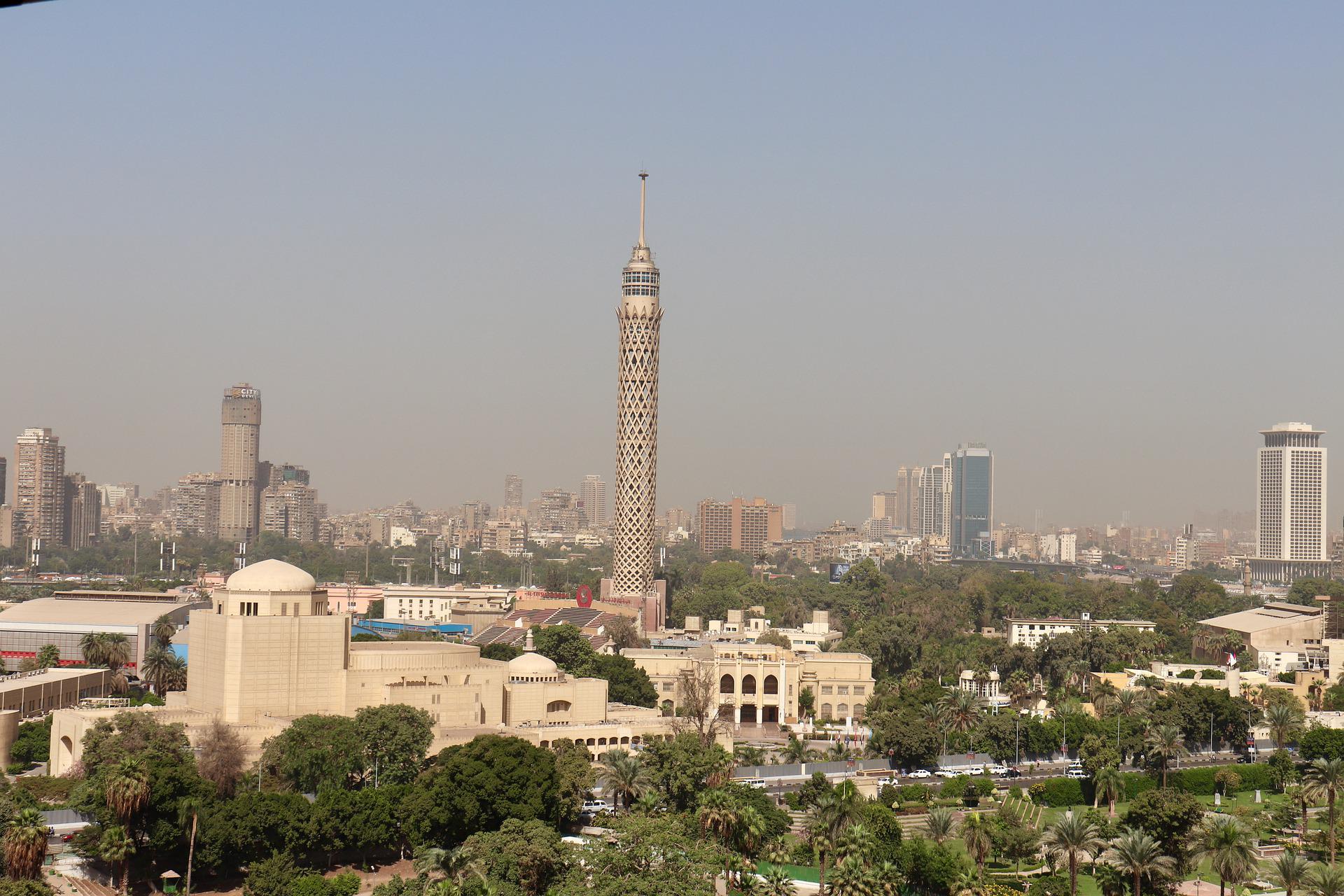Mahmoud Mohieldin, Egypt’s first investment minister and current IMF executive director for Arab studies, shares his thoughts on the region’s economic prospects.
Since the start of 2020, the global economy has had to deal with new precedent after new precedent as lockdowns tested nations’ decision-makers. In response, they mostly resorted to ad-hoc solutions. Today, the world is much calmer, thanks in large part to the global vaccine rollout. Yet, there is still trepidation about economic recovery. “We can’t work with surprises, not even good ones,” Mahmoud Mohieldin, executive director for Arab studies at the IMF, told AmCham during a May 31 webinar. “Any surprises would overwhelm the market.”
In the MENA region, economic recovery could be tricky given the area’s diversity. While most GCC (Gulf Cooperation Council) countries rely primarily on oil, those along the Mediterranean have diverse economies that depend on different sectors to fuel their GDPs. “A regional approach [to recovery] is interesting,” said Mohieldin, adding that it would not succeed. “We need a sector-by-sector, country-by-country approach.”
Yet, there are common factors that MENA nations must consider when resetting their economies, such as defining the role of governments in driving GDP and determining how to capitalize on opportunities from sustainability and digitization.
International context
The pandemic significantly hurt individuals worldwide. According to the IMF, “extreme poverty,” as per the United Nations definition, increased worldwide in 2020 for the first time since the Millennium Development Goals were enacted in 2000. In addition, the International Labour Organization reported 250 million jobs were lost last year, as lockdowns resulted in companies going out of business or downsizing. “That doubled the number of people suffering from acute hunger worldwide,” said Mohieldin.
However, macroeconomic figures performed better than economists initially feared. Mohieldin said global GDP shrank in 2020 by 3.5% compared to forecasts that it would contract 5% to 8%. “By the end of this year, global GDP will have recovered what it lost in 2020,” he said.
Trade in 2020 also beat expectations, declining by 5.3% instead of between 13% to 32%. “Yet, it’s unlikely to return to pre-pandemic levels in 2021,” said Mohieldin.
Foreign direct investment fell 35% to 40% last year, he said, adding, “It has declined for the past five years.” The pandemic merely accelerated that trend, “in part, because developed nations [that can export capital] wanted to increase domestic investment to ensure fast-paced sustainable GDP growth.”
This year and the next might see some FDI action in the MENA region. “Huge multinationals may now be looking to increase their global footprint to recover faster,” said Mohieldin. “However, their FDI will be in highly selective sectors and locations.”
Likely targets will be the 10 nations comprising the Association of Southeast Asian Nations (ASEAN) and Sub-Saharan Africa. “Net FDI per GDP in the MENA region is worse than those two regions,” he said, noting that trade within individual regions is vital for attracting FDI. ASEAN countries, which are primarily export-oriented, have more dealings with each other than MENA nations do. In 2020, intraregional commerce in ASEAN was 12% to 14% of the region’s GDP. In MENA, it was 5% compared to 7% in 2013, said Mohieldin.
The IMF official noted that rich, developed countries would likely recover faster than MENA nations thanks to massive stimulus spending last year. “Recovery is solid in China and the U.S. [because] of spending on recovery packages. For example, the United States spent 10% of GDP on packages,” said Mohieldin. “Lower government spending will mean a slower recovery.”
That spending invariably means rising national debt. However, developed nations that allocated more stimulus early in the pandemic won’t suffer this year. “A report from the Institute of International Finance in April noted global debt has largely stabilized in 2021,” said Mohieldin. “That is because of a decline in [debts] in mature countries. Instead, the increase will be in emerging markets, whose debts jumped from $11 trillion to $86 trillion.”
Another factor favoring developed countries is their fast vaccine rollout, he said. “The U.S., for example, plans to vaccinate 70% of its population by July 4. In the MENA region, it is 2%.”
MENA’s survival
Each nation’s COVID-19 infection curve will dictate its economic recovery pace. Mohieldin noted in the past 18 months, MENA countries had highly diverse experiences with infections because each had their own lockdown policies and strategies as they sought to balance lives and livelihoods.
In North Africa, Egypt’s infection figures in 2020 show twin peaks, similar to an “M” graph. The current trajectory indicates the country is facing its third peak. In Tunisia, infections reached an all-time high and started to drop slightly before significantly increasing again, only to fall. The country experienced a similar “false peak” in 2021, according to the IMF. Morocco’s infection rate rose relatively quickly, stabilized, and is currently dropping at a similar pace to the rise. Its curve resembles a plateau.
Qatar had a massive spike early in the pandemic, but the government contained it quickly. Since March, the country has witnessed a second, less severe spike. The U.A.E. managed to limit COVID-19’s spread early on, but there was a massive spike in infections and now are gradually declining. Meanwhile, Bahrain is witnessing the worst of the pandemic, as its infection rate rose rapidly and then plateaued. Finally, Jordan’s experience has been similar to Egypt’s “M” trajectory, though infections are currently declining.
Mohieldin compared those countries’ readiness to reopen their economies to traffic lights, saying, “None of them are green.” Bahrain, Egypt, Tunisia, and the U.A.E. are “red,” indicating a need to control the spread of the virus before they prioritize their economies. Meanwhile, Jordan, Morocco, and Qatar are “yellow,” according to Mohieldin, who recommended a partial reopening of those economies.
Economic outlooks
Those diverse infection-rate curves impacted GDP growth in 2020 and forecasts through 2022. Mohieldin noted that by the end of 2020, all MENA economies except Egypt (3.6% growth) experienced their GDPs shrink between 2% in Jordan and 8.8% in Tunisia. That excludes a few countries, which have social and security issues, further hurting their economies. For example, Lebanon’s GDP shrank 25%, Libya’s 59%, and West Bank and Gaza Strip’s 10.9%.
By the end of this year, the entire region should see GDP growth. The IMF, however, did not issue a forecast for Lebanon. Under the IMF’s scenario, Egypt would be the only country to see a decline in GDP growth rate (2.5% this year). Except for Libya, the rest of the region would see GDP grow 2% to 5.7% for the West Bank and Gaza Strip. The IMF forecasts Libya’s GDP will jump 130.9% thanks to reconstruction contracts and a regionally recognized government appointment in April. “The region’s overall GDP growth should range from 2% to 4%,” said Mohieldin.
Next year, MENA economies should continue to grow. Egypt would witness the second-highest GDP growth rate in the region (5.7%), after the West Bank and Gaza Strip (6.9%). For the rest of MENA, GDP growth should be between 2.4% and 5.4%.
According to the IMF, inflation will be 4.8% in Egypt, while the rest of MENA would be between 0.3% and 5.8%. The exception is Libya, which will likely see an 18.2% inflation rate. “The implications of rising inflation will come from [a weakening] exchange rate and [rising prices of] imports,” noted Mohieldin.
Those diverse metrics indicate a “K-shaped” recovery for MENA nations, where each country takes a separate path to recovery. “Within each of those countries, sector recovery will also diverge,” said Mohieldin. “Tech [companies] and those that altered their positioning in the market will enjoy a lot of growth.”
Global trends
Regional economic and FDI prospects also could be affected by decisions in other countries and global trends, said Mohieldin. For example, on May 29, a court in The Netherlands said Royal Dutch Shell’s plan to reduce its “carbon intensity” by 20% by 2030 and reach net zero emissions by 2050 wouldn’t be enough to counter climate change. Instead, Royal Dutch Shell would have to cut its emissions relative to 2019 by 45% by 2030. It must also prove it is working to lower emissions of suppliers and consumers by 45%. “This is huge,” wrote Tessa Khan, an international human rights lawyer, in a Guardian opinion piece. “Shell not only has to clean up emissions created by extracting oil and gas, but also has legal responsibilities in relation to the emissions produced by burning those products.”
Within 24 hours of that decision, ExxonMobil announced that Engine No. 1, a climate advocacy hedge fund, now owns a 20% stake in the oil giant and has two seats on the board of directors. Chevron, meanwhile, said its shareholders voted to cut 61% of the company’s emissions generated by burning its products.
“There is no doubt that this week’s news has been not so much a shot across the bows as a direct hit to the hull of Big Oil,” Mark Lewis, chief sustainability strategist at BNP Paribas Asset Management, told The Guardian on May 29. “They will have to recognize now that no amount of patching up the hole will do; shareholders and society want the vessel completely overhauled.”
Mohieldin noted this news would invariably hurt MENA economies that rely on fossil fuel exports, such as Libya, Algeria, and GCC countries. “Things are moving super fast,” he noted. If those nations don’t move quickly, their economic outlooks may dim in the coming years. “Increasingly stringent regulations will put multinationals under more pressure. That would impact their [global] investment plans,” said Mohieldin. “We shouldn’t wait for regulations that force countries into compliance. Instead, we must anticipate what is needed and act.”
The 2016 Paris Agreement, 2015 U.N. Sustainable Development Goals (SDGs), and environmental, social and corporate governance (ESG) frameworks point the way for many corporations. “The ESGs relate to market dynamics and activists’ calls for a cleaner Earth,” said Mohieldin. “They are ahead of government policies and the SDGs in calling for a more sustainable future.”
Growth opportunities
While MENA countries have different GDP structures and economic recovery plans, Mohieldin believes exports, sustainability, and technology will be the region’s principal economic drivers.
The main sectors benefiting are food and agriculture, cities, energy and minerals, and health and well-being. “The SDG framework opened $12 trillion worth of investment opportunities globally in those sectors,” he said. “They represent 60% of the real global economy and are critical to meeting SDG benchmarks.”
The main obstacle facing those opportunities is the lack of specialized funding. “Untapped opportunities [in sustainable and tech products and services] exist because of the massive funding gap,” said Mohieldin. According to the IMF, before 2020, the SDG funding gap was $2.5 trillion. The pandemic increased it by $1 trillion, while funding from private resources dropped by $700 million. “Global assets under management in 2020 were $118 trillion,” he said. “We only need $4.7 trillion.”
Diverting those funds to green investments is easier said than done, he stressed. “Those managing the assets are happy with their return-risk mix. That means governments must work on improving the investment climate, creating more opportunities, and making those investments less risky.”
MENA governments face an additional challenge: cash flows in portfolio investments or FDI from developed to developing nations have been drying up for years. To reverse that trend, MENA governments need to create specialized financing tools. According to Mohieldin, they include green bonds and loans, sustainability bonds, social bonds, green municipal bonds, and sustainability-linked bonds and loans. Globally, those tools opened the door for sustainability funding to increase from $39 billion in January 2020 to $160 billion in March, according to the IMF.
Big question
The pandemic added a new dynamic to economic recovery, with governments allocating more to stimulate consumer spending and support businesses. “That is a new dynamic because the pandemic amplified inequalities,” said Moheldin, noting that surveys across Europe found 60% of youths say “government needs to do more to improve their lives.”
He noted this intervention is necessary for the short run. “An IMF report showed government investments have a multiplier effect on private sector investment. So countries need their governments’ intervention, particularly now,” said Mohieldin. MENA governments should currently focus on sustainability, digitization, technology infrastructure, security and data protection, he added.
In the long term, high public spending could put economies at risk. To bypass such threats, Mohieldin explained that such intervention must support the private sector, stimulate innovation, organize the investment environment and be creative. “It should not be a source of distortion, bureaucracy and putting government finances under pressure,” stressed the IMF official.
Additionally, too much government stimulus might backfire. The state is a regulator that can skew laws to its advantage and is a low-risk investor. Therefore, banks and other funding channels may prefer working with governments over private sector firms whose risks have increased because of the pandemic.
That crowding out is evident in MENA. “The share of private-sector lending is going down, yet banks are improving their metrics,” said Mohieldin. “Government is tax-free, risk-free, and its projects have high credit scores. So it may be low return, but those projects will have high liquidity.”
He noted successful examples of government-led investments that don’t impede the private sector in Vietnam and South Korea. “Having a balanced industrial policy, good partnerships, dialogue and discussion are essential,” said Mohieldin. “In our region, each country has to tailor the definition of its government’s role in the economy.”







